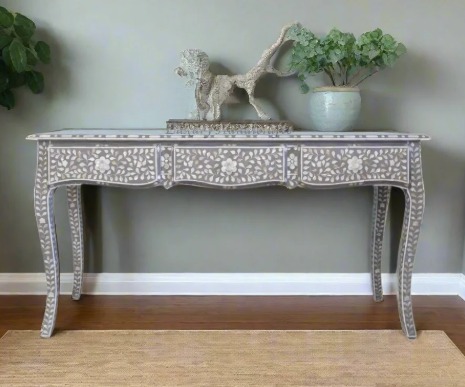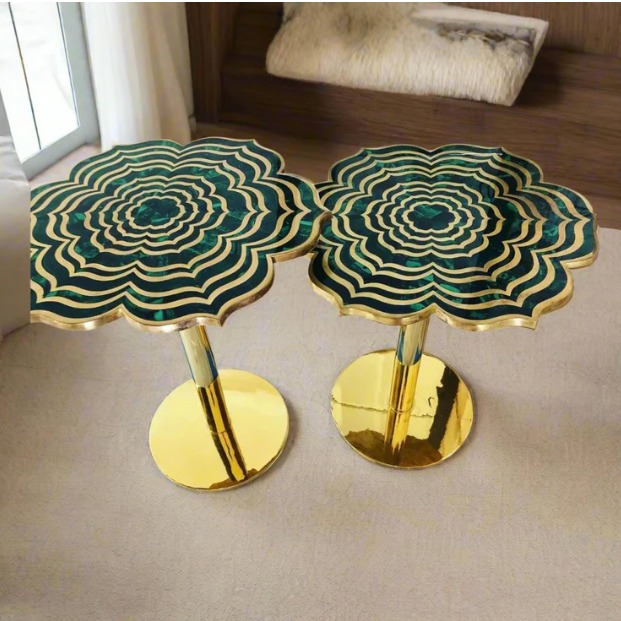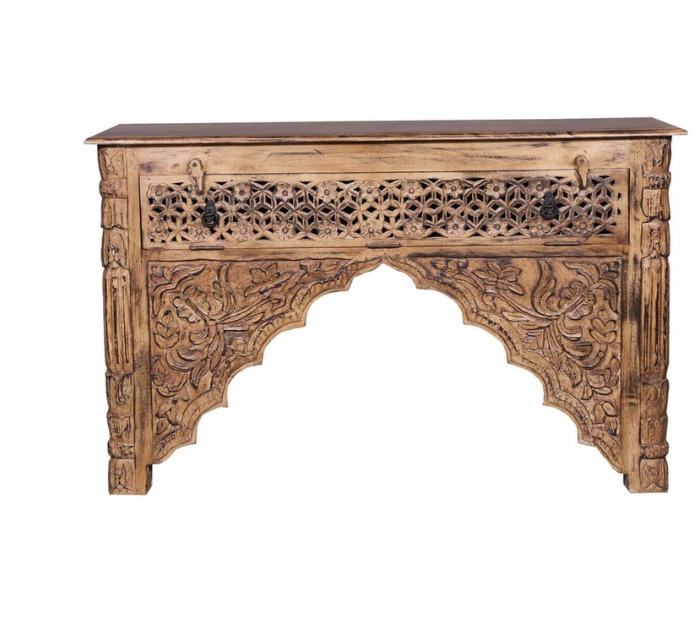The Timeless Appeal of Mother of Pearl Inlay: A Legacy of Craftsmanship and Elegance

Strong 8k brings an ultra-HD IPTV experience to your living room and your pocket.
Mother of pearl inlay is more than just a decorative technique—it's a reflection of centuries-old craftsmanship, cultural heritage, and artistic precision. Used across furniture, décor, and accessories, this intricate technique involves embedding small pieces of shimmering shell into wood or other materials to form beautiful, often symmetrical patterns. From delicate floral motifs to bold geometric designs, mother of pearl inlay continues to captivate interior design enthusiasts and collectors alike.
What Is Mother of Pearl Inlay?
Mother of pearl inlay , also known as nacre, is the iridescent layer found inside the shells of mollusks such as oysters and abalones. Known for its natural luster and durability, this material has been used in art and design for centuries. Inlay work involves embedding small, hand-cut pieces of this material into the surface of wood, resin, or metal. The final result is a beautifully detailed piece that reflects light, offering a soft, ethereal glow.
The mother of pearl inlay process is painstaking and entirely handcrafted. Skilled artisans carefully cut and shape each fragment of shell, then inlay it into pre-carved grooves in the furniture surface. The gaps are filled with colored resin, followed by smoothing and polishing to give the surface a flawless finish.
A Craft with Global Roots
While mother of pearl inlay has deep roots in India—particularly in regions like Rajasthan—it is also found in Persian, Turkish, Chinese, and Middle Eastern art traditions. Historically, this technique was used to adorn palaces, temples, and fine furniture. From royal thrones to ornate jewelry boxes, it was a symbol of refinement and luxury.
In India, this craft flourished under royal patronage, where artisans would spend months or even years working on a single piece. Today, it remains a living tradition, passed down through generations, with modern interpretations bringing the ancient technique into contemporary homes.
Versatility in Modern Interiors
One of the most compelling reasons for the growing popularity of mother of pearl inlay furniture is its versatility. These pieces blend effortlessly into a wide range of interior design styles, from classic and traditional to modern and eclectic.
Dressers and Consoles: A mother of pearl inlay dresser adds an element of sophistication to bedrooms or dressing areas. With delicate floral or geometric patterns, these pieces can stand alone as artistic focal points.
Coffee and Side Tables: Small accent tables with inlay work bring elegance without overwhelming the space. They work especially well in minimalist settings, where the intricate detail can shine.
Mirror Frames and Wall Panels: Inlay mirror frames are particularly popular in bathrooms, entryways, or above mantels. They add visual interest while reflecting light and space.
Storage and Decorative Items: From inlay trays and boxes to cabinets and sideboards, the application of this craft is virtually limitless.
Caring for Mother of Pearl Inlay
Despite its delicate appearance, mother of pearl inlay is relatively easy to maintain if handled with care. Avoid harsh chemicals and abrasive materials; instead, clean surfaces with a soft, dry or slightly damp cloth. It's best to keep inlay furniture away from excessive heat or moisture to prevent warping or loosening of the shell pieces. With regular dusting and proper care, these pieces can remain beautiful for generations.
Ethical and Sustainable Appeal
Many consumers today are conscious of where and how their products are made. The appeal of mother of pearl inlay furniture is not just in its visual beauty but also in its ethical craftsmanship. Most pieces are made by hand, supporting local artisans and traditional practices. When sustainably sourced, mother of pearl is a by-product of the shellfish industry, making it an eco-conscious material choice compared to synthetic alternatives.
Why It Endures
What makes mother of pearl inlay truly timeless is its ability to evolve while remaining rooted in tradition. New-age designers are increasingly experimenting with colors, patterns, and forms—bringing inlay techniques to sleek, contemporary pieces without losing the essence of the craft.
It’s not just furniture; it’s a conversation between history and modern living, between handcraft and function. Whether you’re drawn to its heritage, its detail, or its visual appeal, mother of pearl inlay offers a unique way to bring art into everyday life.
Note: IndiBlogHub features both user-submitted and editorial content. We do not verify third-party contributions. Read our Disclaimer and Privacy Policyfor details.




